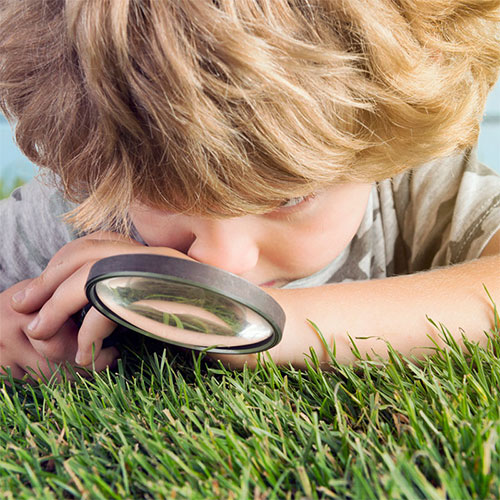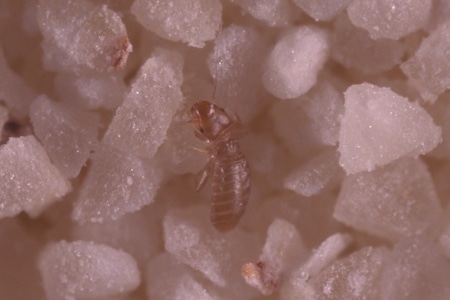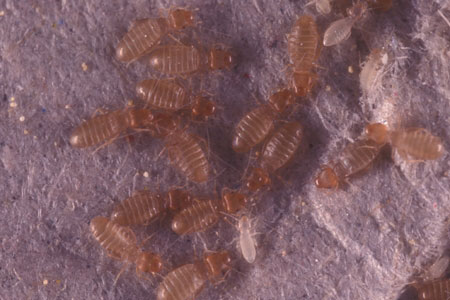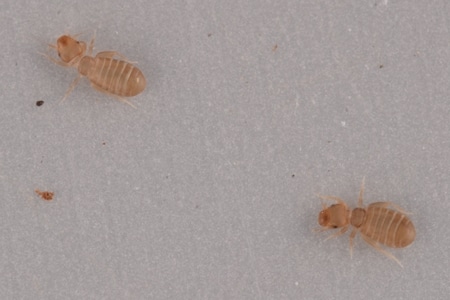Home » Bugs » Other Bugs »
Active Seasons


Psocid Appearance and Size Facts
Psocids, or psocid mites, or book lice, might be small in size, but they become a bothersome problem when they infest your Florida home. Being as small as they are, trying to remove or even identify them can prove to be a difficult task. At Hulett Environmental Services, we think it’s important to provide useful information to allow Florida homeowners to detect a potential infestation. Some of the common characteristics of psocids are:
- Body: Usually soft-bodied insects with antennae and chewing mouth parts
- Color: Either pale white or cream-colored
- Size: Generally range from 1/25 to 1/12 of an inch in size
- Wings: Either have four wings or are wingless
Distinguishing Psocids From Other Bugs
Book lice are extremely small. They are commonly mistaken for small ghost ants or sugar ants, but booklice are often much smaller than any ant species. One other key characteristic about psocids that distinguishes them from other bugs is a large nose-like growth on the front of their heads. These big noses are called the clypeus and are the key indicators of psocids. However, since the average psocid is extremely small in size, it’s best to turn to a professional if you suspect a psocid infestation.
We offer psocid treatment in the following locations and their surrounding areas:

Behavior and Habitat of Psocids
Usually, book lice or psocid mites are found in humid climates. In the typical house, they thrive particularly in poorly ventilated areas. Some key areas of interest for psocids are books, papers, damp cardboard boxes, and leaking sinks in the kitchen or bathroom. When it comes to reproduction, the female typically lays eggs in the spring and summer, making psocids most common during these months.
As for eating habits, psocids tend to feed off mold, fungi, or decaying organic material such as grain and starches. This is why book lice are often associated with water intrusion from a leaking roof, A/C lines, windows, doors, or sinks, or in rooms with high humidity and poor ventilation such as an attic, and small bathroom or kitchen. Sometimes, book lice can also infest stored food products that have been stored in damp or humid conditions. While it’s hard to detect them at first, their presence around dirty and decaying material can often lead to sanitation and cleaning problems that are a major hassle for Florida homeowners.

Signs of Infestation of Psocids
The main sign of a psocid infestation in your home is spotting a psocid or group of psocid on various surfaces or in products. In any case, psocids tend to appear suddenly and, with their size, tend to be difficult to spot early on. For reference, some people consider psocid mites to look like tiny termites or ants.

Tips for Prevention of Psocids
Reducing the humidity in your Florida home is a primary way of preventing psocid. If the humidity is low, psocids tend to die off at a fast rate. If humidity remains low and is controlled year-round, then the likelihood of a reinfestation goes down dramatically. Other ways of preventing psocid infestations are the removal of wet materials, standing water sources or leaks, rotting wood, and molded products. However, in addition to these cultural controls, maintenance pest control services from a professional pest control company can help control infestations, and inspection can often help prevent them in the first place.
Getting Rid of Book Lice
Due to their incredibly small size, getting rid of your psocid infestation effectively can prove to be an uphill battle. Even with preventive measures, the risk of an infestation is still present and isn’t eliminated naturally. To ensure your infestation is gone once and for all and is kept out of your Florida home, your best bet is to go to professional psocid control services for help.
Effective Psocid Control Solutions
When you’re in need of the best residential pest control services in Florida, just call Hulett! With preventive treatments for a wide range of pests, our team of expert technicians are ready to take on your infestation.
Schedule your same-day inspection with Hulett Environmental Services online and clear your home of book lice and psocids today!



